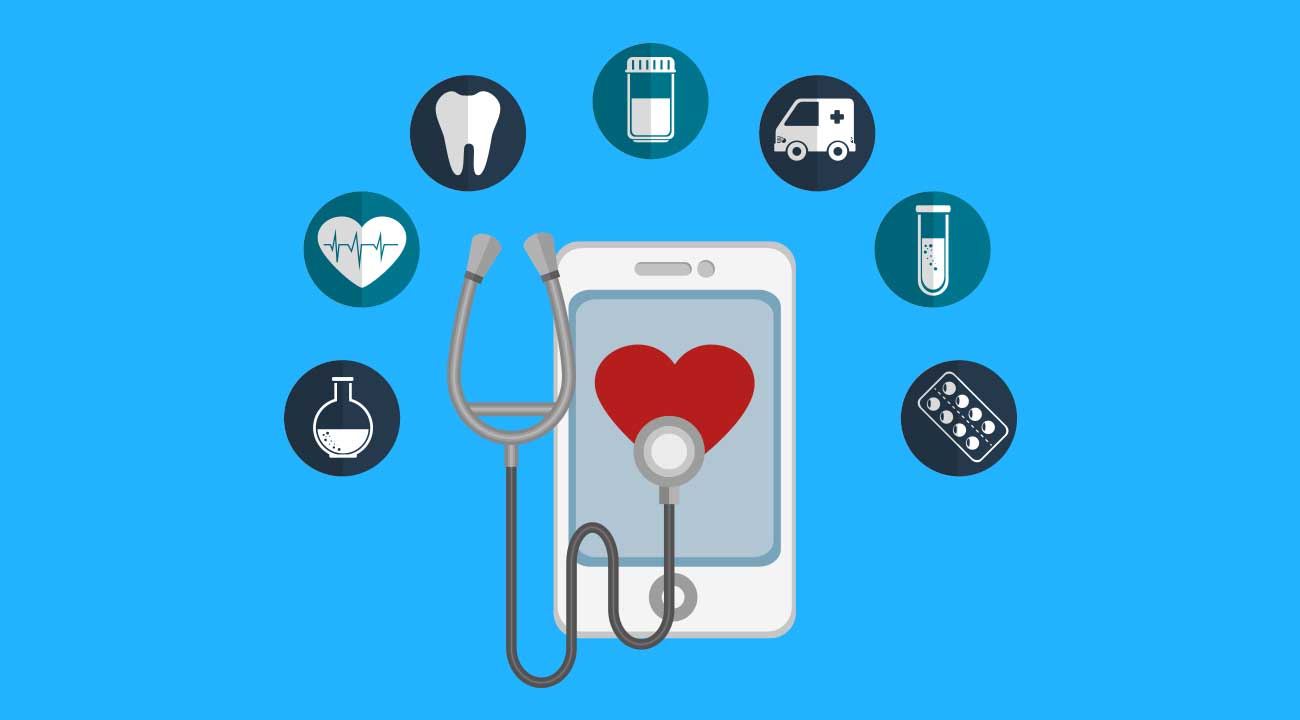Table of Contents
With the advent of satellite internet, the potential for telemedicine to become a global phenomenon has become exponential. One of the most important aspects of telemedicine was to increase the reach of proper medical treatment in rural regions. The major challenge with telemedicine reaching the most remote location was internet connectivity.
However, innovative companies like Starlink are working on solving this problem. Aiming to avail service in limited locations from as early as 2020, they could help revolutionize telemedicine startups and help them reach new heights. Post-pandemic telemedicine/telehealth could grow into a $250 billion dollar industry.
Now let’s take a quick look at what telemedicine actually is and how it works. Telemedicine enables medical services providers to assess, analyze and treat patients from a distance utilizing broadcast communications technology.
According to NCBI, telemedicine has experienced a striking development and is becoming a viable modality somewhat recently during the pandemic and it is turning into an inexorably significant part of the world’s healthcare infrastructure. Just with small spending on a web camera and internet connection, one can take or give telemedicine service with little or no other additional cost.
Even these are not necessary through new mobile applications such as Teladoc, Amwell, etc. Which enables multiple parties to use the smartphone and get connected in an instant, similar to the uber model. Moreover, these technologies are enabling doctors to record the conversation, which could be kept on an online secured database.
Such platforms are guaranteeing the security of the private data of the patients collected during the consultation call. Furthermore, these platforms are making it much easier for patients to keep track of their medical history through medical e-prescriptions.
The pandemic has taught us that telemedicine could not only be used as a convenient tool to access medical services from home, rather it proved to be somewhat of an essential tool during the lockdown and the peak of the Coronavirus pandemic.
More importantly through this large-scale implementation of telemedicine and telehealth technologies – the pandemic gave us an important lesson that the model is successful. However, it is important to draw a clear distinction between the two terms, telemedicine, and telehealth.
Telehealth is not the same as telemedicine in light that it alludes to a broader range of remote medical care services than telemedicine. According to Chironhealth, telemedicine is related to remote clinical services, telehealth can include more remote non-clinical services, for example, healthcare provider training, and managerial meetings, and is not bounded only by medical services. As indicated by the World Health Organization, telehealth incorporates, “Surveillance, public health functions, and health promotion”.
Telemedicine includes the utilization of electronic communication and software to offer medical assistance to patients without an in-person visit. Telemedicine technologies are oftentimes used for follow-up visits, control/monitoring patients with chronic illness, medication management, specialist consultation, and a large group of other clinical services that can be given remotely by means of secure video and audio connections. (5G)
Earlier History
During the last two decades, we have seen many disruptions in food, transport, hotel, and various other industries. Uber changed the way we interact with taxis, and Airbnb disrupted the hotel and tourism industry. We were yet to have a breakthrough technology that will change the medical services industry as we know it. Before the pandemic, there was very little adoption rate of telemedicine.
Less than 1% of the US population availed of telemedicine services, which dramatically increased a few thousand times during the Coronavirus pandemic. Let’s take a quick look at how telemedicine evolved over time during the last few decades.
Since telemedicine’s inception, its growth and adoption have rather been slow until recently. It was around fifty years ago that a couple of emergency clinics began exploring different platforms regarding telemedicine to remotely reach patients in rural areas.
However, with the quick changes in technology throughout the recent decades, telemedicine has transformed into more sophisticated enabling remote communication between caregivers and takers whether they are in their homes, workplaces, or anywhere else.
The idea of telemedicine began with the introduction of telecommunications technology, the methods for transferring information over a distance as electromagnetic signals. Early types of telecommunications technology included the telegraph, radio, and telephone.
In the late nineteenth century, the radio and phone were simply beginning to arise as viable communications technology. Alexander Graham Bell patented the telephone in 1876 and Heinrich Rudolf Hertz carried out the first radio transmission in 1887, according to NCBI. However, it wasn’t until the mid-twentieth century that everyone began to use these technologies, and envisioned that the technology could be applied to the field of medication.
In 1925, a cover outline of the Science and Invention magazine highlighted an odd development by Dr. Hugo Gernsback, called the “teledactyl.” The envisioned device would utilize spindly robot fingers and radio technology to analyze a patient from a remote place and show the specialist a video feed of the patient. While this development never moved beyond the idea stage, it anticipated the famous telemedicine definition we consider today – a remote video consultation among specialists and patients.
A few years later, during the 1950s, a small number of hospital systems, and college-based medical centers focused on exploring different avenues to bring the concept of telemedicine become reality. Clinical staff at two distinctive healthcare centers in Pennsylvania around 24 miles separated communicated radiologic pictures through the telephone.
During the 1950s, a Canadian specialist based this technology on a Teleradiology system that was used in and around Montreal. At that point, in 1959, Doctors at the University of Nebraska had the option to send neurological assessments to clinical colleges from the field through two-way intuitive TV. By 1964, they had assembled a telemedicine interface that permitted them to give healthcare services at Norfolk State Hospital, 112 miles from the campus.

Initially, healthcare experts built up this technology to reach remote patients living in rural territories. Be that as it may, with time, clinical staff and the U.S. government took a fisheye view – the possibility to reach urban areas with medical services deficiencies and to react to health-related crises by sharing clinical counsel and patient health records immediately.
During the 1960s, weighty ventures from the U.S. Government, including the Public Health Department, NASA, Department of Defense, and the Health and Human Sciences Department drove examination and advancement in telemedicine.
Sending cardiovascular rhythms during crises began at about this time. For example, in Miami, the college clinical focus cooperated with the fire-salvage office by imparting electro-heart beat signs over the voice radio channels from the salvage destinations.
One particularly fruitful telemedicine project supported by the public authority was known as the Space Technology Applied to Rural Papago Advanced Health Care (STARPAHC) and was an organization among NASA and the Indian Health Services.
The program financed remote clinical services to Native Americans living on the Papago Reservation in Arizona and space travelers in space! Activities like STARPAHC drove research in clinical designing and extended headways in telemedicine. The following few decades saw growth with advancements in telemedicine and more extensive exploration at colleges, medical centers, and think tanks.
Telemedicine Industry Today
According to the OnlineDoctor website, Today, the telemedicine field is changing quicker than at any other time. As technology progresses at remarkable levels, so does the far-reaching affordability and accessibility to basic telemedicine devices.
For instance, not only do we currently have the technology for live video telemedicine but, a large part of the U.S. population has experience using the web video chat applications (like Skype/Facetime/Zoom) and has access to a PC or cell phone to use them.
Telemedicine was initially made as an approach to treat patients who were situated in remote areas, far away from neighborhood health centers, or in regions having low physicians.
While telemedicine is as yet utilized today to address these issues, it’s inexorably turning into a device for convenient clinical care. At present, a connected patient needs to waste less time in the waiting area at the specialist and get prompt consultation for minor issues.
However, also get urgent care when they need it.
Moreover, breakthrough wearable technologies are making revolutionary changes in the healthcare sector. Apple Watch has been steadily incorporating many health-tracking features. Other smart IOT devices produced by companies like Liveongo are helping track the health of chronic disease patients in real time.
Uploading the data on the cloud and sharing the data with doctors and other relevant stakeholders. Through integrated platforms patients are now more connected with doctors than ever before. Such platforms are empowering busy doctors specifically primary care providers to visit more patients without the need for additional time in commute.
Many platforms offer patients 24×7 consultations with medical doctors contacted by the platform provided by various telemedicine companies. Top telemedicine startups including Teladoc, Amwell, and Doctor on Demand, experienced rapid growth during the coronavirus pandemic.
Future Of The Telemedicine Industry
All things considered, these startups and other telemedicine companies give a platform to seamlessly connect patients and doctors regardless of where they might be. With more development in advanced technologies such as augmented reality, satellite internet, 5G, AI, and telemedicine will take the next great leap forward.
As more visionary leaders like Elon Musk get involved in telehealth with projects like Neuralink great milestones could be achieved in the years to come. Gradually, telemedicine is turning into a race to make medical services more affordable and convenient for the masses. Creating a Win-Win situation for all the stakeholders involved.










Leave a Comment